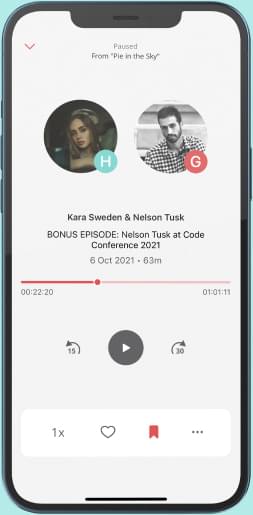
E384 - A Lesson, A Story and Why You Should Include Both in Your Next Podcast Episode
Episode 384 - A Lesson, A Story and Why You Should Include Both in Your Next Podcast Episode The idea that we should share a lesson without a story and not share a story without a lesson highlights the importance of integrating meaningful educational content into narratives. This concept is particularly relevant in podcasting, where storytelling is a powerful tool for engaging audiences and conveying information. Here's how this principle applies to podcasting, along with practical thoughts on the interplay between lessons and stories: Lessons Without Stories In podcasting, a lesson without a story can be delivered through informative content that focuses on conveying information directly. Stories Without Lessons Sharing a story without a lesson can be entertaining but lacks depth and educational value. Interplay Between Lessons and Stories The most effective podcasts often combine both lessons and stories to create engaging and educational content. Here’s how this interplay works: Engagement: Stories make lessons more engaging and memorable. By embedding educational content within a narrative, podcasts can capture listeners' attention and retain it more effectively. Emotional Connection: Stories create an emotional connection with the audience, making the lessons more relatable and impactful. This connection enhances the learning experience and encourages listeners to reflect on the information presented. Contextualization: Stories provide context for lessons, helping listeners understand the relevance and application of the information. This contextualization makes the content more accessible and applicable to real-life situations. Retention: When lessons are presented through stories, they are more likely to be remembered. The narrative structure helps listeners recall key points and insights more effectively than dry, factual presentations. Practical Thoughts for Podcasting Plan Your Content: Before recording, plan how you will integrate lessons into your stories. Consider what educational points you want to convey and how they can be naturally woven into the narrative. Use Mentor Podcasts: Listen to podcasts that effectively combine lessons and stories, such as Radiolab or Hidden Brain. Analyze how they structure their content to engage and educate listeners. Engage Your Audience: Encourage interaction by asking questions or inviting feedback. This can help reinforce the lessons and make the storytelling more participatory. Reflect and Adapt: After each episode, reflect on how effectively you conveyed the lessons through your stories. Use feedback to adapt your approach for future episodes. By integrating lessons into stories, podcasters can create content that is both engaging and educational, making the listening experience more impactful and memorable for their audience. Book: Storyworthy: Engage, Teach, Persuade, and Change Your Life through the Power of Storytelling https://a.co/d/dIuMUgw ___ https://howtopodcast.ca/ check out Dave's new blog if you like to read! Subscribe today!! https://truemediasolutions.ca/podblog
From "The How To Podcast Series - Revolving Guest Co-Hosts, Podcast Tips and A Community for Podcasters"


Comments
Add comment Feedback